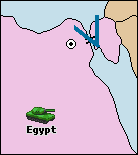
|
v12.SUEZ.A1
TEST CASE, SUEZ PERMISSION WITH UNIT IN EGYPT |
(Invalid test) |
v12.SUEZ.A2
TEST CASE, NO SUEZ PERMISSION WITHOUT UNIT IN EGYPT |
(Invalid test) |
v12.SUEZ.A3
TEST CASE, NO SUEZ PERMISSION WITH FOREIGN UNIT IN EGYPT |
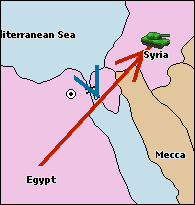
|
v12.SUEZ.A4
TEST CASE, SUEZ PERMISSION EVEN VALID IF UNIT LEAVES EGYPT |
(Invalid test) |
v12.SUEZ.A5
TEST CASE, SUEZ PERMISSION NOT VALID IF UNIT JUST ENTERS EGYPT |
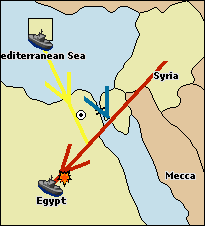
|
v12.SUEZ.A6
TEST CASE, SUEZ PERMISSION IF EGYPTIAN UNIT IS DISLODGED |
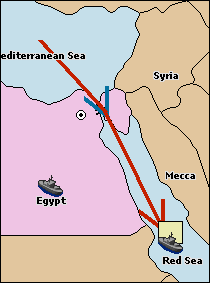
|
v12.SUEZ.B1
TEST CASE, SUEZ CANAL NAVIGABLE WITH PERMISSION |
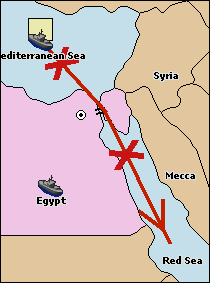
|
v12.SUEZ.B2
TEST CASE, SUEZ CANAL NOT NAVIGALBE WITHOUT PERMISSION |
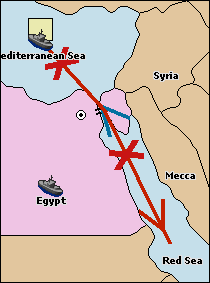
|
v12.SUEZ.B3
TEST CASE, SUEZ CANAL ONLY NAVIGABLE IN ONE DIRECTION |

|
v12.SUEZ.C1
TEST CASE, SUPPORT MOVE FOR SUEZ MOVE VALID |
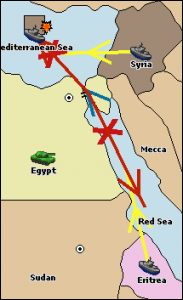
|
v12.SUEZ.C2
TEST CASE, HEAD-TO-HEAD THROUGH SUEZ WITH SUPPORT |
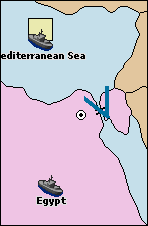
|
v12.SUEZ.D1
TEST CASE, NO SUPPORT HOLD THROUGH SUEZ CANAL |
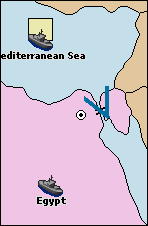
|
v12.SUEZ.D2
TEST CASE, NO SUPPORT MOVE THROUGH SUEZ CANAL |
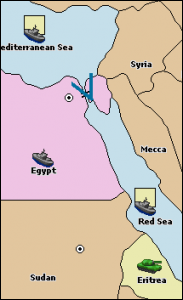
|
v12.SUEZ.D3
TEST CASE, NO CONVOY THROUGH SUEZ CANAL |

|
v12.TSR.A1
TEST CASE, BASIC USAGE OF TSR |

|
v12.TSR.A2
TEST CASE, ONLY RUSSIA MAY USE THE TSR |
(Invalid test) |
v12.TSR.A3
TEST CASE, ONLY ONE UNIT MAY USE THE TSR |

|
v12.TSR.A4
TEST CASE, ONLY ARMIES MAY USE THE TSR |

|
v12.TSR.B1a
TEST CASE, IGNORE HOLDING RUSSIAN UNIT ON ROUTE |

|
v12.TSR.B1b
TEST CASE, IGNORE RUSSIAN UNIT MOVING ALONG ROUTE AGAINST TSR MOVEMENT |

|
v12.TSR.B1c
TEST CASE, IGNORE RUSSIAN UNIT MOVING ALONG ROUTE WITH TSR MOVEMENT |

|
v12.TSR.B1d
TEST CASE, IGNORE RUSSIAN UNIT ENTERING THE ROUTE |

|
v12.TSR.B1e
TEST CASE, IGNORE RUSSIAN UNIT LEAVING THE ROUTE |

|
v12.TSR.B2a
TEST CASE, FOREIGN UNIT HOLDING/SUPPORTING ON ROUTE BLOCKS ROUTE AND A SUPPORT IS NOT CUT |

|
v12.TSR.B2b
TEST CASE, FOREIGN UNIT MOVING ALONG ROUTE AGAINST TSR MOVEMENT BLOCKS ROUTE WITH STANDOFF |

|
v12.TSR.B2c
TEST CASE, FOREIGN UNIT MOVING ALONG ROUTE WITH TSR MOVEMENT BLOCKS ROUTE |

|
v12.TSR.B2d
TEST CASE, FOREIGN UNIT ENTERING THE ROUTE BLOCKS ROUTE WITH STANDOFF |

|
v12.TSR.B2e
TEST CASE, FOREIGN UNIT LEAVING THE ROUTE DOES NOT BLOCK THE ROUTE |

|
v12.TSR.B3a
TEST CASE, A MOVE CHAIN BLOCKS THE ROUTE |

|
v12.TSR.B3b
TEST CASE, A BLOCKED MOVE CHAIN STILL BLOCKS THE ROUTE |

|
v12.TSR.B3c
TEST CASE, A BLOCKED MOVE CHAIN WITH RETURNING RUSSIAN STILL BLOCKS THE ROUTE |

|
v12.TSR.B3d
TEST CASE, A BLOCKED MOVE CHAIN WITH ENTERING RUSSIAN DOES NOT BLOCK THE ROUTE |

|
v12.TSR.B4a
TEST CASE, A STANDOFF ON ROUTE DOES NOT BLOCK ROUTE |

|
v12.TSR.B4b
TEST CASE, A STANDOFF ON ROUTE WITH RUSSIAN DOES NOT BLOCK ROUTE |

|
v12.TSR.B5a
TEST CASE, A STANDOFF ON ROUTE WITH RETURNING UNIT AGAINST DIRECTION |

|
v12.TSR.B5b
TEST CASE, A STANDOFF ON ROUTE WITH RETURNING RUSSIAN UNIT AGAINST DIRECTION |

|
v12.TSR.B6a
TEST CASE, A STANDOFF ON ROUTE WITH RETURNING UNIT WITH DIRECTION |

|
v12.TSR.B6b
TEST CASE, A STANDOFF ON ROUTE WITH RETURNING RUSSIAN UNIT WITH DIRECTION |

|
v12.TSR.B7a
TEST CASE, A STANDOFF ON ROUTE WITH BOTH UNITS ON ROUTE |

|
v12.TSR.B7b
TEST CASE, A STANDOFF ON ROUTE WITH BOTH RUSSIAN UNITS ON ROUTE |

|
v12.TSR.B8a
TEST CASE, A BOUNCE BY A HOLDING RUSSIAN UNIT DOES NOT BLOCK THE ROUTE |

|
v12.TSR.B8b
TEST CASE, A DISLODGED HOLDING RUSSIAN UNIT RESULTS IN BLOCKADE |

|
v12.TSR.B9a
TEST CASE, A TEMPORARY LEFT TERRITORY DOES NOT BLOCK THE ROUTE |

|
v12.TSR.B9b
TEST CASE, MULTIPLE TEMPORARY LEFT TERRITORY DO NOT BLOCK THE ROUTE |

|
v12.TSR.B10
TEST CASE, A DISLODGED UNIT STILL BLOCKS THE ROUTE |

|
v12.TSR.B11
TEST CASE, JUST TRYING TO STANDOFF DOES NOT UNBLOCK ROUTE |

|
v12.TSR.B12
TEST CASE, A SUPPORT CANNOT CIRCUMVENT BLOCKADES |
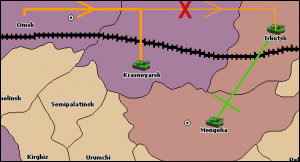
|
v12.TSR.C1
TEST CASE, NO ATTACK IN TARGET TERRITORY, NO CUT OF SUPPORT |
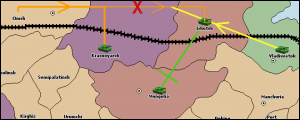
|
v12.TSR.C2
TEST CASE, NO DISLODGEMENT IN TARGET TERRITORY |
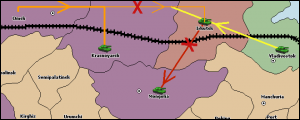
|
v12.TSR.C3a
TEST CASE, NO DISLODGMENT EVEN IF TEMPORARY LEFT |
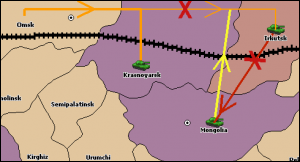
|
v12.TSR.C3b
TEST CASE, NO DISLODGMENT EVEN IF TEMPORARY LEFT (SPECIAL CASE: MOVE AGAINST SUPPORTER) |
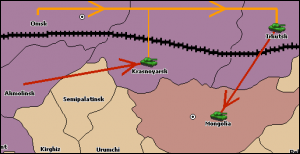
|
v12.TSR.C4
TEST CASE, SUCCESS IF LEFT |

|
v12.TSR.C5
TEST CASE, STANDOFF IN TARGET TERRITORY |
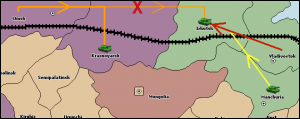
|
v12.TSR.C6
TEST CASE, BOUNCE AGAINST SUPPORTED MOVE |
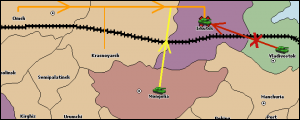
|
v12.TSR.C7
TEST CASE, BOUNCE WITH SUPPORTED MOVE |
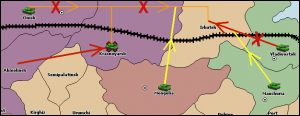
|
v12.TSR.C8
TEST CASE, STANDOFF DUE TO SUPPORTS |
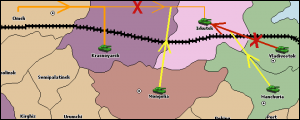
|
v12.TSR.C9a
TEST CASE, DEFEND WITH SUPPORTED TSR |
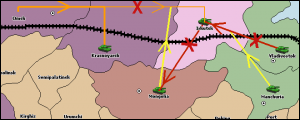
|
v12.TSR.C9b
TEST CASE, DEFEND WITH SUPPORTED TSR (SPECIAL CASE: DEFENDED TRY TO CUT THEIR DEFENSE) |
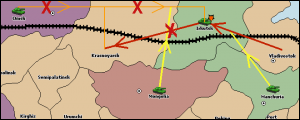
|
v12.TSR.C9c
TEST CASE, DEFEND WITH SUPPORTED TSR (SPECIAL CASE: DEFENDED BLOCK THEIR DEFENSE) |
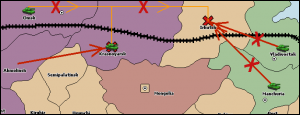
|
v12.TSR.C10
TEST CASE, TRIPLE STANDOFF |
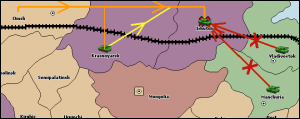
|
v12.TSR.C11a
TEST CASE, TRIPLE STANDOFF WITH SUPPORT FOR TSR |
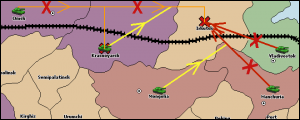
|
v12.TSR.C11b
TEST CASE, TRIPLE STANDOFF WITH SUPPORT FOR TSR AND OTHER |
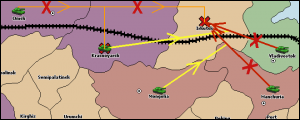
|
v12.TSR.C11c
TEST CASE, TRIPLE STANDOFF WITH SUPPORT OTHERS |
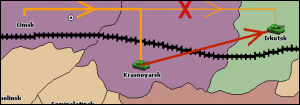
|
v12.TSR.C12a
TEST CASE, NO STANDOFF WITH FOREIGN UNIT MOVING ALONG TSR |
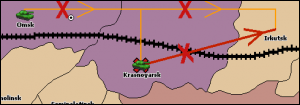
|
v12.TSR.C12b
TEST CASE, STANDOFF WITH RUSSIAN UNIT MOVING ALONG TSR |

|
v12.TSR.D1
TEST CASE, TSR BLOCKED ON ROUTE STOPS BEFORE BLOCKADE |
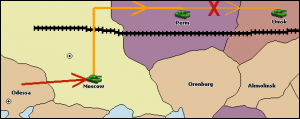
|
v12.TSR.D2
TEST CASE, TSR BLOCKED IN TARGET STOPS BEFORE TARGET |
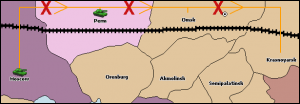
|
v12.TSR.D3
TEST CASE, TSR IMMEDIATELY BLOCKED HOLDS |

|
v12.TSR.D4a
TEST CASE, A HOLDING RUSSIAN UNIT BLOCKS RETURNING TSR |

|
v12.TSR.D4b
TEST CASE, A MOVING WITH RUSSIAN UNIT BLOCKS RETURNING TSR |

|
v12.TSR.D4c
TEST CASE, A MOVING AGAINST RUSSIAN DOES NOT BLOCK RETURNING TSR |

|
v12.TSR.D4d
TEST CASE, AN ENTERING RUSSIAN UNIT BLOCKS RETURNING TSR |

|
v12.TSR.D5
TEST CASE, A FOREIGN UNIT OF TEMPORARY LEFT TERRITORY BLOCKS RETURNING TSR |
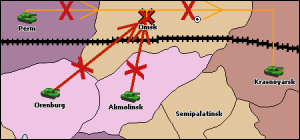
|
v12.TSR.D6
TEST CASE, A STANDOFF BLOCKS RETURNING TSR |

|
v12.TSR.D7
TEST CASE, MULTIPLE BLOCKS |

|
v12.TSR.E1
TEST CASE, A HEAD-TO-HEAD WITH RUSSIAN UNIT NOT BLOCKS ROUTE |
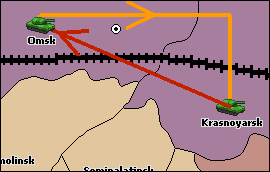
|
v12.TSR.E2
TEST CASE, A HEAD-TO-HEAD WITH RUSSIAN UNIT CAN SWAP UNITS |
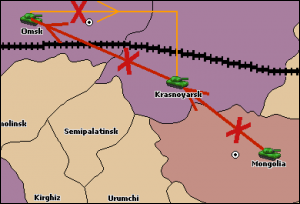
|
v12.TSR.E2a
TEST CASE, BLOCKED SWAPPING |

|
v12.TSR.E3
TEST CASE, A HEAD-TO-HEAD WITH FOREIGN UNIT DOES BLOCK ROUTE |
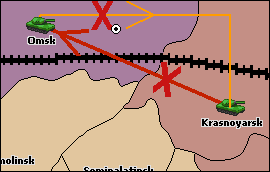
|
v12.TSR.E4
TEST CASE, A HEAD-TO-HEAD WITH FOREIGN UNIT CANNOT SWAP UNITS |

|
v12.TSR.E5
TEST CASE, A SUPPORTED HEAD-TO-HEAD WITH FOREIGN UNIT DOES BLOCK ROUTE |
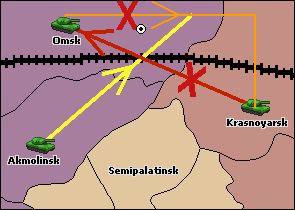
|
v12.TSR.E6
TEST CASE, A SUPPORTED HEAD-TO-HEAD WITH FOREIGN UNIT MAY NOT DISLODGE |
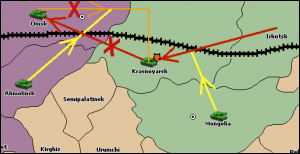
|
v12.TSR.E7
TEST CASE, A SUPPORTED HEAD-TO-HEAD WITH FOREIGN UNIT MAY NOT DEFEND THE FOREIGN UNIT |
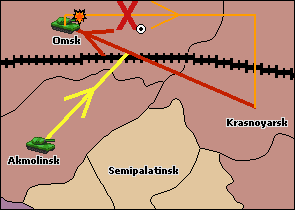
|
v12.TSR.E8
TEST CASE, A HEAD-TO-HEAD WITH SUPPORTED FOREIGN UNIT DOES RESULT IN DISLODGEMENT |
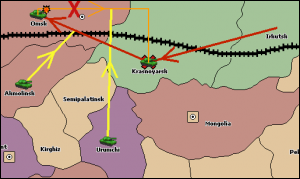
|
v12.TSR.E9
TEST CASE, A SUPPORTED HEAD-TO-HEAD WITH SUPPORTED FOREIGN UNIT DOES RESULT IN DISLODGEMENT |

|
v12.TSR.F1
TEST CASE, A BLOCKED AND RETURNING UNIT HOLDS TERRITORY |

|
v12.TSR.F2
TEST CASE, A BLOCKED AND RETURNING UNIT CAN BE DISLODGED |

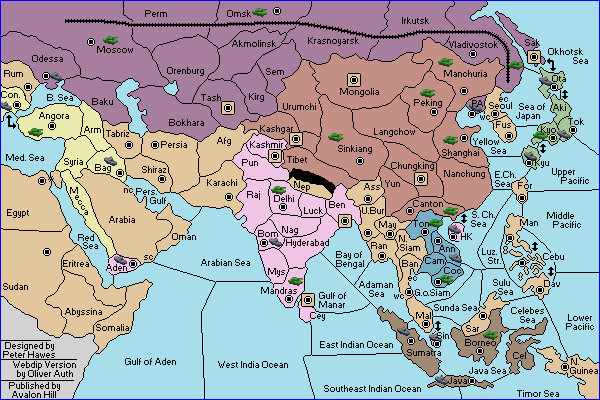
 ) drawn around them. Once occupied they count as any other SC.
) drawn around them. Once occupied they count as any other SC.